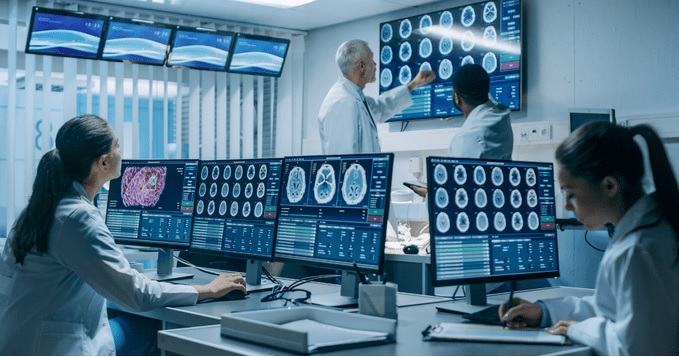The integration of artificial intelligence (AI) into healthcare is transforming how we approach diagnostics, treatment planning, and patient care. AI models, especially those used for medical diagnostics, rely heavily on vast amounts of data to learn and make accurate predictions. However, the effectiveness of these models is only as good as the data they are trained on. High-quality, well-annotated data is crucial to the success of these AI systems, and this is where annotation tools play a vital role.
The Importance of Data Annotation in Healthcare AI
Healthcare AI models, whether they’re used to detect cancer in radiology images or predict patient outcomes, require carefully curated and annotated data. An annotation tool is essential in this process, as it allows medical professionals and data scientists to label and categorize data with precision. For example, in medical imaging, an annotation tool can be used to mark specific areas of interest, such as tumors or lesions, providing the AI model with the necessary information to learn from these examples. Without accurate annotations, the model might struggle to differentiate between healthy and diseased tissue, leading to less reliable diagnostics.
The role of an annotation tool extends beyond simple labeling. It also helps ensure consistency across large datasets, which is critical in medical research where uniformity is necessary for accurate model training. By using an annotation tool, healthcare professionals can apply standardized labels and annotations across thousands of images, ensuring that the AI model learns from consistent data inputs. When paired with secure and compliant healthcare AI, this consistency becomes even more critical in improving the model’s accuracy and reliability in real-world clinical settings.
Improving Diagnostic Accuracy with Annotated Data
In healthcare, accuracy is non-negotiable. A misdiagnosis can lead to delayed treatment, unnecessary procedures, or even life-threatening situations. Therefore, the data used to train AI models must be meticulously annotated to ensure that the resulting predictions are as accurate as possible.
For instance, consider a scenario where an AI model is being trained to detect early-stage lung cancer in CT scans. Radiologists can use an annotation tool to highlight and label areas that indicate the presence of cancerous cells. By feeding the model with these annotated images, it learns to identify similar patterns in new, unseen scans. The more accurately these annotations are made, the better the model becomes at detecting cancer, potentially catching it at a stage when treatment is most effective.
Moreover, an annotation tool can help in the iterative process of refining AI models. As the model is tested and used in clinical environments, additional data can be annotated to fine-tune its performance. This continuous feedback loop ensures that the AI system remains accurate and up-to-date with the latest medical knowledge and practices.
Streamlining the Annotation Process with AI-Assisted Tools
Annotating medical data is a time-consuming and labor-intensive process, often requiring the expertise of highly trained medical professionals. However, advances in AI are now being leveraged to assist in the annotation process itself, making it more efficient.
AI-assisted annotation tools can automatically suggest labels or highlight areas of interest in medical images, which can then be reviewed and adjusted by human experts. For example, if an AI tool detects a pattern in an X-ray that resembles a common lung disease, it can pre-annotate the image, allowing the radiologist to simply verify or refine the annotation. This not only speeds up the annotation process but also allows medical professionals to focus on more complex cases that require their full attention.
The combination of AI and human expertise in the annotation process ensures that the resulting data is both accurate and comprehensive, leading to more effective training of diagnostic models. This hybrid approach is particularly valuable in healthcare, where the stakes are high and the demand for high-quality data is constant.
Enhancing Patient Outcomes with Better AI Models
The ultimate goal of using AI in healthcare is to improve patient outcomes. Whether it’s through faster diagnosis, personalized treatment plans, or predictive analytics that can foresee potential health issues, AI has the potential to revolutionize patient care. However, achieving these outcomes depends on the quality of the AI models being used, which in turn relies on the quality of the training data.
An annotation tool is a critical component in creating high-quality training data. By ensuring that data is accurately labeled and consistent, annotation tools help build AI models that are reliable and effective. These models can then be deployed in clinical settings, where they assist healthcare providers in making better-informed decisions, leading to improved patient outcomes.
Conclusion: The Vital Role of Annotation Tools in Healthcare AI
As AI continues to advance in the healthcare sector, the importance of well-annotated data cannot be overstated. An annotation tool is essential for creating the high-quality, consistent data needed to train reliable AI models. By enhancing the accuracy of these models, annotation tools contribute directly to better diagnostic capabilities and improved patient care. As the field of healthcare AI grows, investing in robust annotation tools will be key to unlocking the full potential of AI in medicine.
